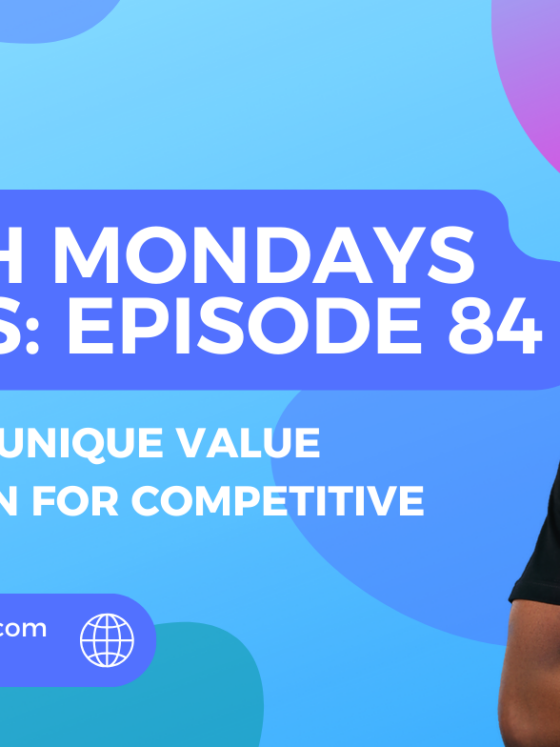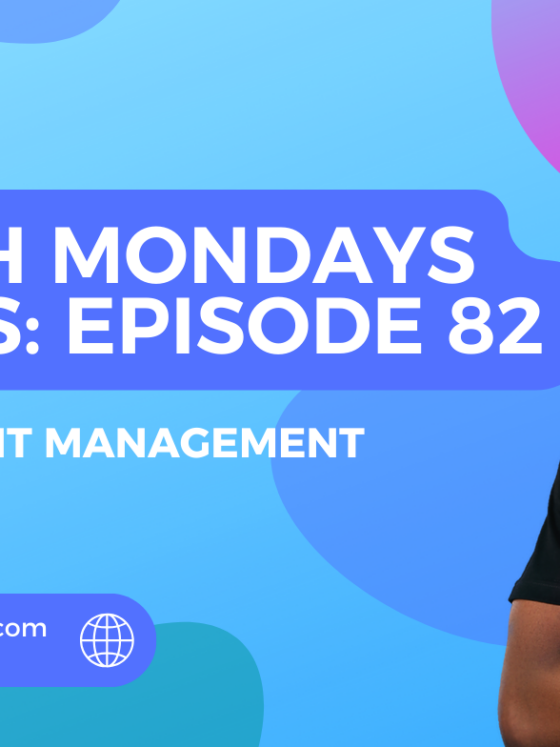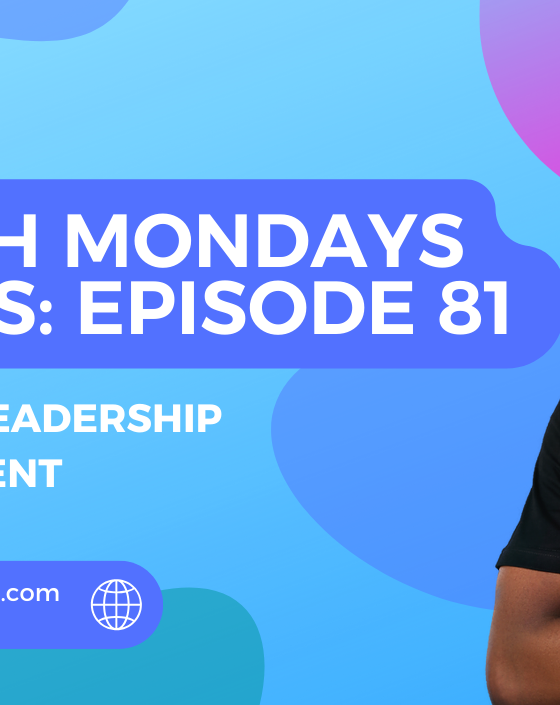Customer Success as a Growth Lever
North Mondays Series: Episode 97

Business growth isn’t just about acquiring new customers—it’s about keeping them happy, engaged, and successful. This is where Customer Success (CS) comes in. Companies that prioritize customer success as a strategic growth driver see higher retention rates, increased lifetime value, and stronger brand advocacy.
However, many businesses struggle with aligning customer success teams with business goals. There’s often a disconnect between what success teams focus on and what truly drives business impact. Instead of working proactively to ensure customer satisfaction and growth, many CS teams find themselves reacting to problems after they arise.
On the other hand, forward-thinking companies are embracing proactive customer success—a trend where businesses anticipate customer needs, solve challenges before they escalate, and help customers unlock the full value of their products or services.
This episode explores the power of customer success as a growth lever, the challenges businesses face in making it work, and how the shift toward proactive CS is transforming customer relationships and business performance.
Why Customer Success Drives Business Growth
Customer success isn’t just about support—it’s about ensuring customers achieve their desired outcomes with your product or service. When businesses invest in CS, they benefit in multiple ways:
- Higher Customer Retention: A well-executed CS strategy reduces churn by ensuring customers continuously find value in your offerings.
- Increased Customer Lifetime Value (CLV): Happy customers are more likely to renew subscriptions, upgrade plans, or make repeat purchases.
- Stronger Brand Advocacy: Satisfied customers become brand ambassadors, recommending your business to others and fueling organic growth.
- Reduced Customer Acquisition Costs: Retaining customers is far more cost-effective than acquiring new ones. Investing in CS means fewer resources spent on replacing lost customers.
- Improved Product and Service Offerings: CS teams gather valuable insights that help refine products and services, ensuring they evolve with customer needs.
Despite these advantages, many businesses struggle with implementing CS effectively, largely due to misalignment with business objectives.
Challenges in Aligning Customer Success Teams with Business Goals
For customer success to be a true growth driver, it must be strategically aligned with business objectives. However, many companies face significant challenges in achieving this alignment:
- Lack of Clear Metrics: Many CS teams measure success based on customer satisfaction scores (CSAT) alone, without tying their efforts to revenue growth, churn reduction, or expansion opportunities.
- Siloed Operations: CS teams often operate independently from sales, marketing, and product teams, leading to inconsistent customer experiences and missed growth opportunities.
- Reactive Support Mindset: Instead of proactively guiding customers toward success, many CS teams function like support departments, only engaging customers when issues arise.
- Insufficient Resources: Many companies underinvest in CS, viewing it as a cost center rather than a strategic growth function.
- Failure to Scale: As businesses grow, CS processes often don’t scale effectively, leading to bottlenecks and decreased service quality.
To overcome these challenges, businesses must rethink their approach to customer success—shifting from a reactive to a proactive model.
The Trend of Proactive Customer Success
Traditionally, CS teams have been reactive, responding to problems only after customers raise concerns. But with increasing competition and customer expectations, businesses are moving toward a proactive customer success model.
Proactive CS involves anticipating customer challenges, addressing them early, and actively guiding customers toward their desired outcomes. Here’s how this trend is reshaping the business landscape:
- Customer Onboarding Optimization: Companies now focus on structured, high-touch onboarding experiences to ensure new customers start off successfully.
- Predictive Analytics for Churn Prevention: AI-powered tools analyze customer behavior and flag at-risk accounts, allowing CS teams to intervene before customers leave.
- Automated Engagement Strategies: Businesses use automated emails, in-app guidance, and AI-driven chatbots to deliver personalized, proactive support.
- Customer Education and Enablement: Companies invest in knowledge bases, webinars, and training programs to empower customers with self-service solutions.
- Cross-Department Collaboration: Proactive CS teams work closely with sales, marketing, and product teams to ensure customers get the best possible experience.
Companies like Salesforce, HubSpot, and Zendesk have mastered proactive customer success, using data-driven insights and personalized engagement to keep customers happy, engaged, and loyal.
Steps to Build a Proactive Customer Success Strategy
For businesses looking to leverage CS as a growth lever, transitioning from a reactive to a proactive model is essential. Here are key steps to get started:
- Define Success Metrics: Align CS goals with broader business objectives, such as retention rates, upsell/cross-sell growth, and Net Promoter Score (NPS).
- Develop a Structured Onboarding Process: Ensure new customers experience early wins with a guided, high-touch onboarding program.
- Leverage Data for Proactive Engagement: Use customer analytics to identify trends and anticipate potential issues before they arise.
- Implement Automated Customer Check-Ins: Set up regular, automated touchpoints (emails, surveys, or check-ins) to maintain engagement.
- Educate Customers Continuously: Provide ongoing resources like webinars, how-to guides, and FAQs to help customers maximize the value of your product or service.
- Encourage Customer Feedback: Regularly collect and act on customer insights to refine your offerings and improve satisfaction.
- Foster a Customer-Centric Culture: Ensure all teams—sales, marketing, product, and support—work together to prioritize customer success.
By taking these steps, businesses can transform customer success from a support function into a powerful growth engine.
Key Takeaways
- Customer success isn’t just about retention—it’s a strategic growth driver that boosts revenue, loyalty, and advocacy.
- Many businesses struggle to align CS teams with business goals, leading to inefficiencies and missed opportunities.
- The shift toward proactive customer success allows businesses to anticipate customer needs and enhance their experience before issues arise.
- Investing in structured onboarding, predictive analytics, and continuous engagement helps businesses stay ahead of customer expectations.
- A well-executed CS strategy creates a competitive advantage, turning satisfied customers into long-term growth partners.
Call-to-Action
Is your customer success strategy helping your business grow, or is it just another support function? Take a moment this week to assess your CS approach. Are you being proactive in ensuring customer success, or are you simply reacting to issues as they come?
Start by identifying one area where you can implement a proactive strategy—whether it’s refining onboarding, using predictive analytics, or automating customer check-ins.
Let’s continue the discussion! Share your thoughts and experiences in the comments or on social media using #NorthMondays. Your insights could help other businesses rethink their approach to customer success.
Until next Monday, keep your customers thriving, and your business will thrive too! 🚀
#NorthMondays #BizDevWithNnanna #CustomerSuccess #ProactiveCS #RetentionStrategies #BusinessGrowth #CustomerExperience #DataDrivenSuccess








Recent Comments